Hospitality
15 ROOMS WITH A VIEW
INTERIOR DESIGN DELLE DIMORE DELLA TONNARA DI SCOPELLO

Un rinnovamento leggero dove materiali, toni di colore e qualche oggetto di design ridefinisce il carattere senza tempo delle dimore affacciate sul mare di Scopello.
Qualsiasi progetto di “riqualificazione”del complesso monumentale della Tonnara di Scopello non può prescindere dal fatto che una delle componenti qualitative di questo incredibile sito è il luogo stesso in cui si trova e del quale è parte integrante.
Gli edifici e i faraglioni sembrano avere tra loro un processo di osmosi: i corpi architettonici articolati e accostati gli uni agli altri dialogano tra loro e col paesaggio mozzafiato che li circonda, creando una sorta di unicum che si viene scoprendo man mano che si scende il sentiero sterrato che dalla strada scende verso il mare. Dall’alto, si notano i tetti allungati nell’avvallamento e il colore rossiccio e scrostato della facciata della Palazzina Florio. Ma soltanto percorrendo la discesa e approsimandosi agli edifici si capisce la sapienza antica con cui questo complesso è stato creato, e successivamente riadattato ad una funzione di accoglienza e narrazione museale.
La nuova tappa intrapresa ha voluto portare le 15 dimore e gli spazi di accoglienza verso uno standard di ospitalità più sofisticato partendo dalla considerazione del ruolo culturale che questo luogo rappresenta e che ogni visitatore, residente o giornaliero, dovrà respirare.
L’obiettivo sarà raggiunto dunque se, accanto ai livelli elevatissimi di qualità dell’hospitality e dei servizi offerti, si sarà stati in grado di preservare il carattere unico di questo luogo, non replicato nè replicabile. Se diventerà un luogo di esperienza sia sul piano ambientale e materico che per la storia che permetterà di vivere ai suoi visitatori, anche solo per una giornata o per una notte.
Il progetto di Interior e Art Direction ha riguardato la parte di decorazione delle dimore, del Salone dei Quattro Venti, della terrazza esterna rivolta ai faraglioni riservata al pubblico dell’hotel, gli spazi di accoglienza e la creazione di una piccola caffetteria affacciata sul piazzale.
Interventi leggeri, che hanno portato tocchi di novità e comfort in un’atmosfera storica senza tempo, seppur stratificata. I letti, le sedute, l’illuminazione, i tessuti, i colori, le materie, gli accessori, gli arredi interni ed esterni sono stati selezionati per creare un’esperienza di ospitalità di altissimo livello ma rigorosamente site specific, lontana dallo spirito delle grandi catene che hanno ormai uniformato l’esperienza dell’abitare di molta parte del mondo.
A light renovation where materials, color tones and some design objects redefine the timeless character of the houses overlooking the sea of Scopello.
Any refurbishment project for the monumental complex of the Tonnara di Scopello cannot ignore the fact that one of the qualitative components of this incredible site is place in which it is located and of which it is an integral part.
The buildings and stacks seem to have a process of osmosis between them: the articulated and juxtaposed architectural bodies interact with each other and with the breathtaking landscape that surrounds them, creating a sort of unicum that is discovered as you walk down the path that descends from the road to the sea. From above, you can see the roofs stretched out into the valley and the reddish, peeling color of the facade of the Palazzina Florio. But only by going downhill and approaching the buildings you really understand the ancient wisdom with which this complex was created, and subsequently adapted to a museum and very special hospitality place.
The new stage undertaken wanted to bring the 15 residences and reception spaces towards a more sophisticated standard of hospitality starting from the consideration of the cultural role that this place represents and that every visitor, resident or day-tripper, will have to breathe.
The goal will therefore be achieved if, alongside the very high quality levels of the hospitality and services offered, we will have been able to preserve the unique character of this place, neither replicated nor replicable. If it will become a place of experience both on an environmental and material level and for the history that it will allow its visitors to experience, even if only for a day or for a night.
The Interior and Art Direction project concerned the decoration of the residences, the Salone dei Quattro Venti, the external terrace facing the stacks reserved for the hotel public, the reception areas and the creation of a small café overlooking the square.
Light interventions, which have brought touches of novelty and comfort in a timeless, stratified, historical atmosphere. The beds, the seats, the lighting, the fabrics, the colours, the materials, the accessories, the internal and external furnishings have been selected to create a hospitality experience of the highest level but strictly site specific, far from the spirit of the great chains that have now standardized the living experience in a large part of the world.
TONNARA DI SCOPELLO
INTERIOR DESIGN FOR HOSPITALITY
Scopello, Trapani
Cliente: La Storica Tonnara S.r.l.
2021-22, completata la prima fase
Superificie di intervento:
15 dimore e spazi comuni per il pubblico: sala colazioni, bar,
terrazza sul mare, reception e attesa degli ospiti
Intervento:
restyling degli spazi interni con interventi sui colori, gli arredi, l’illuminazione, gli accessori
*bene vincolato
ph. Gio Latis
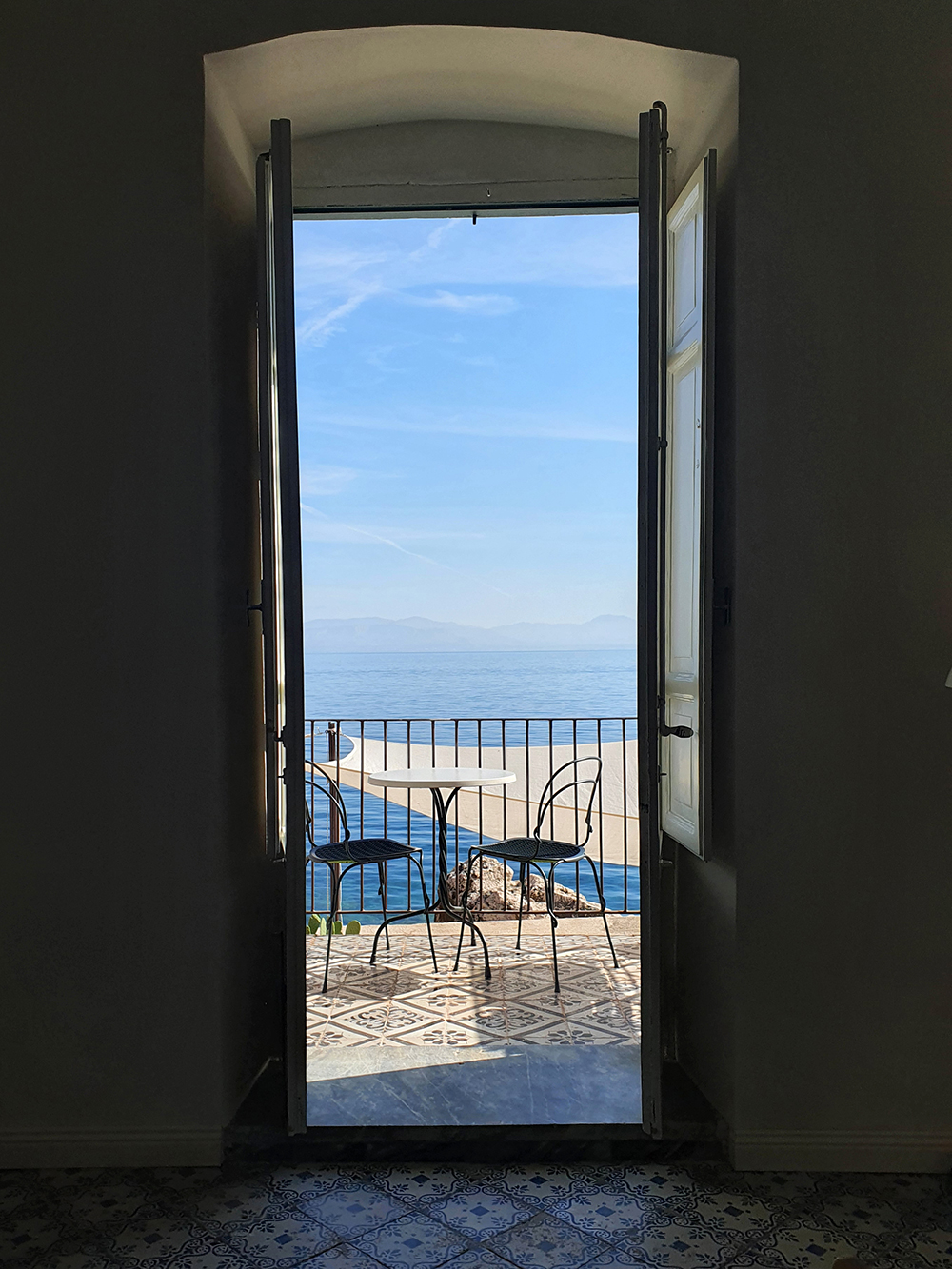

LE DIMORE NOBILIARI
Le dimore nella Palazzina Florio hanno spazi ariosi, soffitti alti, luce intensa grazie alle grandi finestre affacciate sul mare.
Nel corpo di fabbrica principale, denominato Palazzina Florio, si trovano le dimore classiche.
Sono caratterizzate da ampie porte finestre con balconi, dai serramenti storici con le persiane; dai soffitti alti, spesso a volta, da cui pendevano originariamente lampadari in stile; da pavimenti in marmette e graniglia, non sempre originali; da alcuni pezzi di arredo storici in stile liberty, e altri aggiunti nel tempo ma ormai storicizzati.
In queste dimore la scelta progettuale è stata di continuità con interventi sui toni cromatici, sulle luci, sul comfort dei letti e sull’aggiunta di alcuni pezzi di design classici: le panche thonet accostate alle sedie originali, nuovi rivestimenti, e – dove necessario – le grandi testate dei letti che organizzano lo spazio in modo nuovo privilegiando le viste verso il panorama e creando alle spalle lo spogliatoio.
THE NOBLE ROOMS
The houses in the Palazzina Florio have airy spaces, high ceilings, intense light thanks to the large windows overlooking the sea.
The classic residences are located in the main building, called Palazzina Florio.
They are characterized by large French windows with balconies and shutters; by high ceilings, often vaulted, from which original style chandeliers hung; by floors in tiles and grit, not always original; by some historical pieces of furniture in Art Nouveau style, and others added over time but now historicised.
In these homes, the design choice was oriented on soft interventions on the chromatic tones, on the lights, on the choice of fully comfortable beds and on the addition of some classic design pieces: the Thonet benches combined with the original chairs, new upholstery, and – where necessary – the large headboards of the beds that organize the space in a new way, favoring the views towards the panorama and creating the dressing room behind it.
TONNARA DI SCOPELLO
INTERIOR DESIGN FOR HOSPITALITY
Intervento: restyling degli spazi interni con interventi sui colori,
gli arredi, l’illuminazione, gli accessori
DIMORE NOBILIARI:
Franca, Igiea, Lucie, Annina, Giovanna D’Ondes, Giugiù
ph. Gio Latis




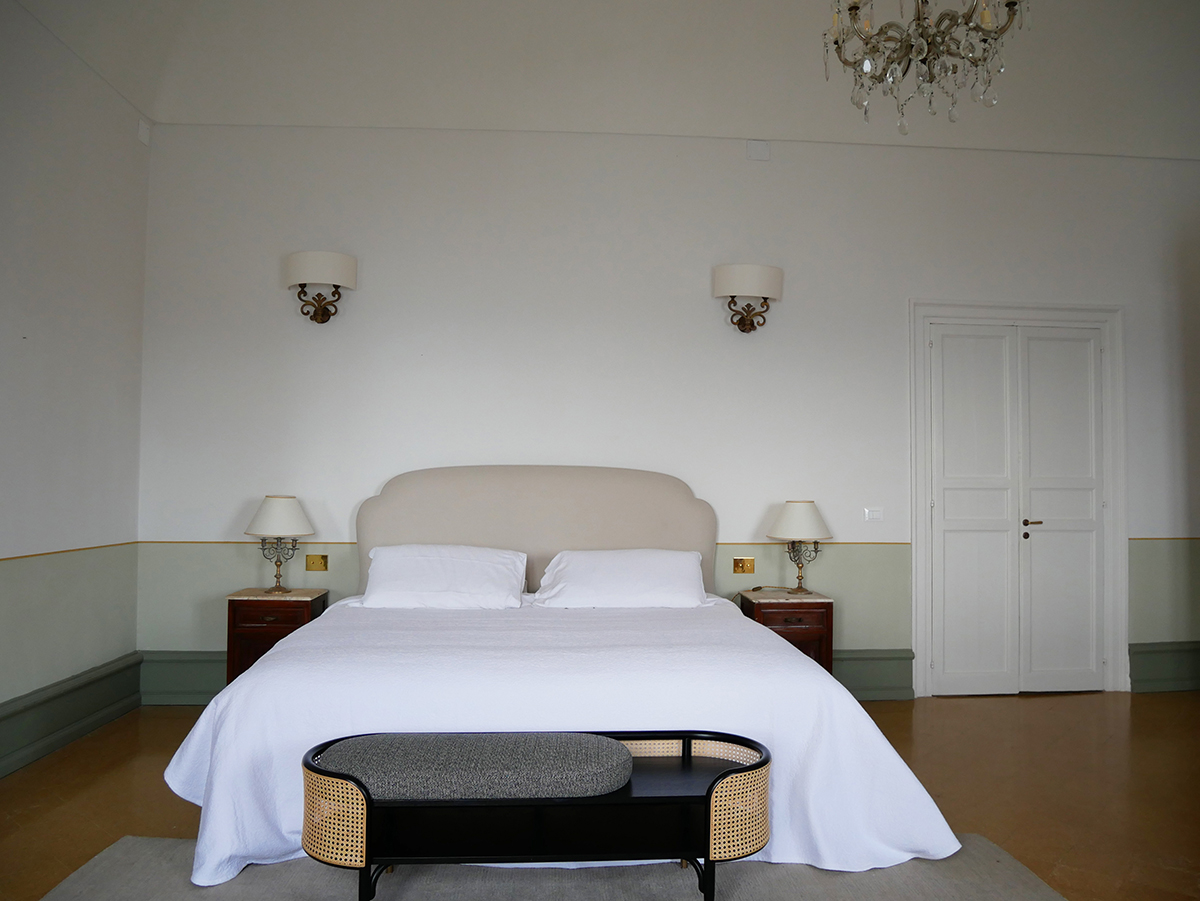



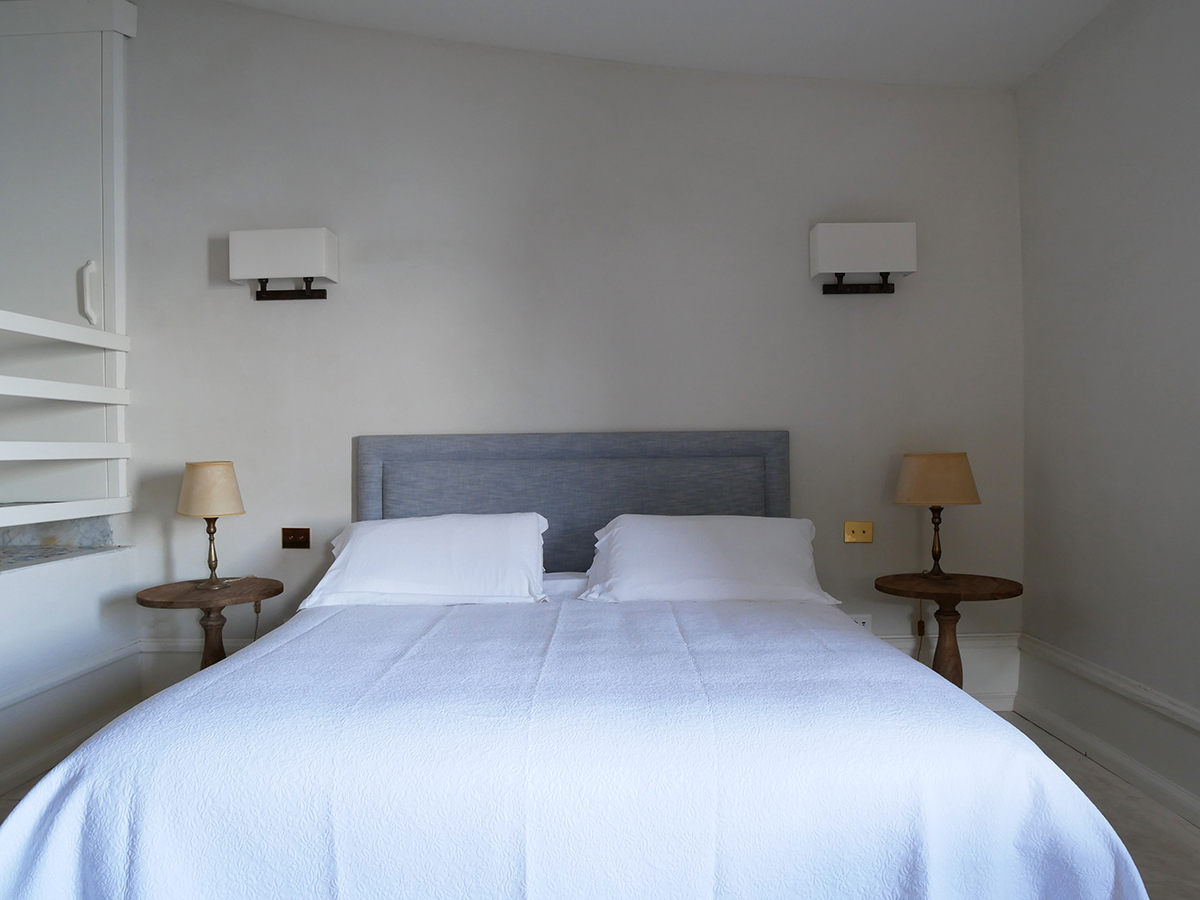



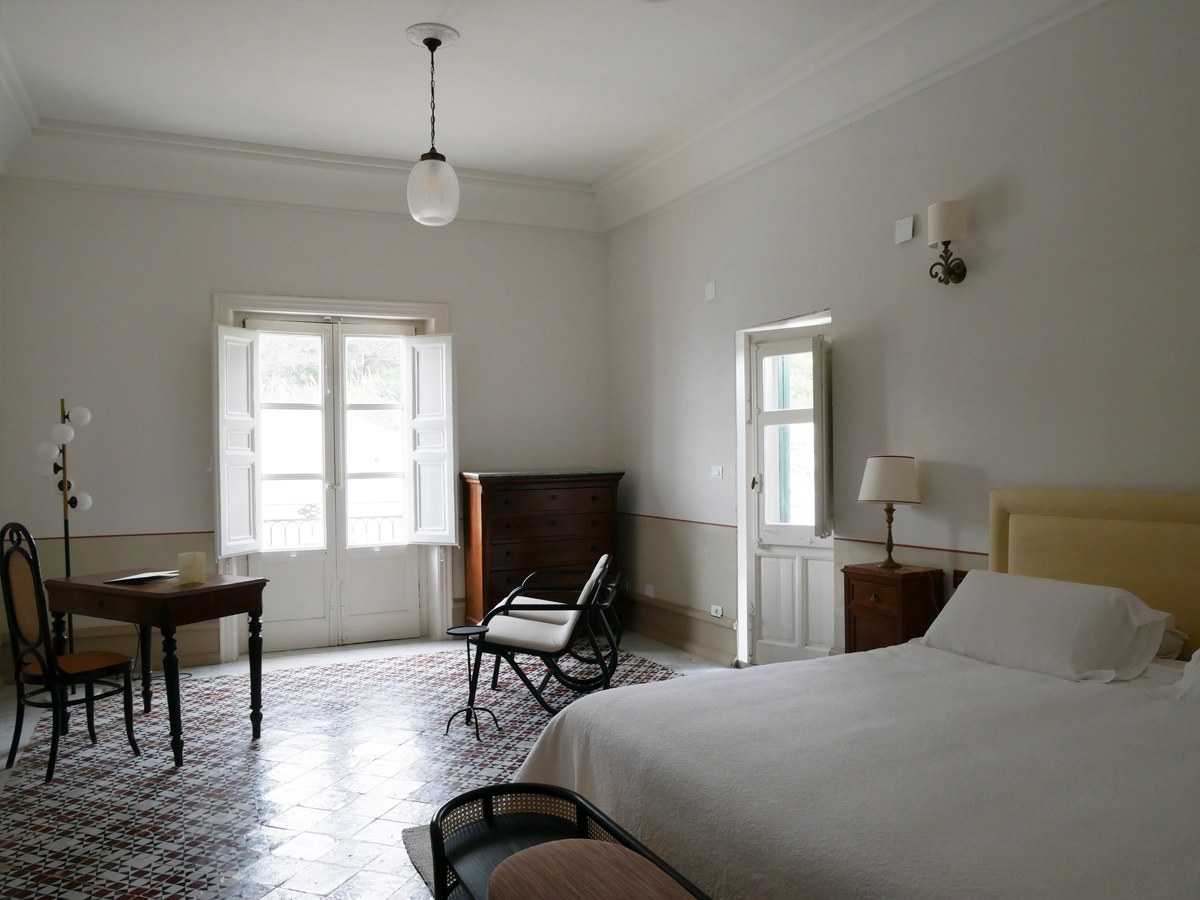

LE DIMORE MINIMAL
Sono dimore essenziali, a stretto contatto col mare e con la natura, dove ogni scelta è votata al minimalismo e all’autenticità.
I materiali naturali, i colori accesi nei toni del blu, del rosso e dei neutri, la semplicità compositiva che porta a comporre gli arredi e gli accessori, sono volti a far vivere all’ospita un’esperienza semplic e vicina all’atmosfera originaria di questi luoghi.
THE MINIMAL ROOMS
They are essential homes, in close contact with the sea and nature, where every choice is devoted to minimalism and authenticity.
The natural materials, the bright colors in shades of blue, red and neutral, the compositional simplicity that leads to the composition of the furnishings and accessories, are aimed at making the guests experience simple but sophisticate, close to the original atmosphere of these places.
TONNARA DI SCOPELLO
INTERIOR DESIGN FOR HOSPITALITY
Intervento: restyling degli spazi interni con interventi sui colori,
gli arredi, l’illuminazione, gli accessori
DIMORE MINIMAL:
Bagliera, Amministrazione, Guardia, Rocca, Legnaia
ph. Gio Latis
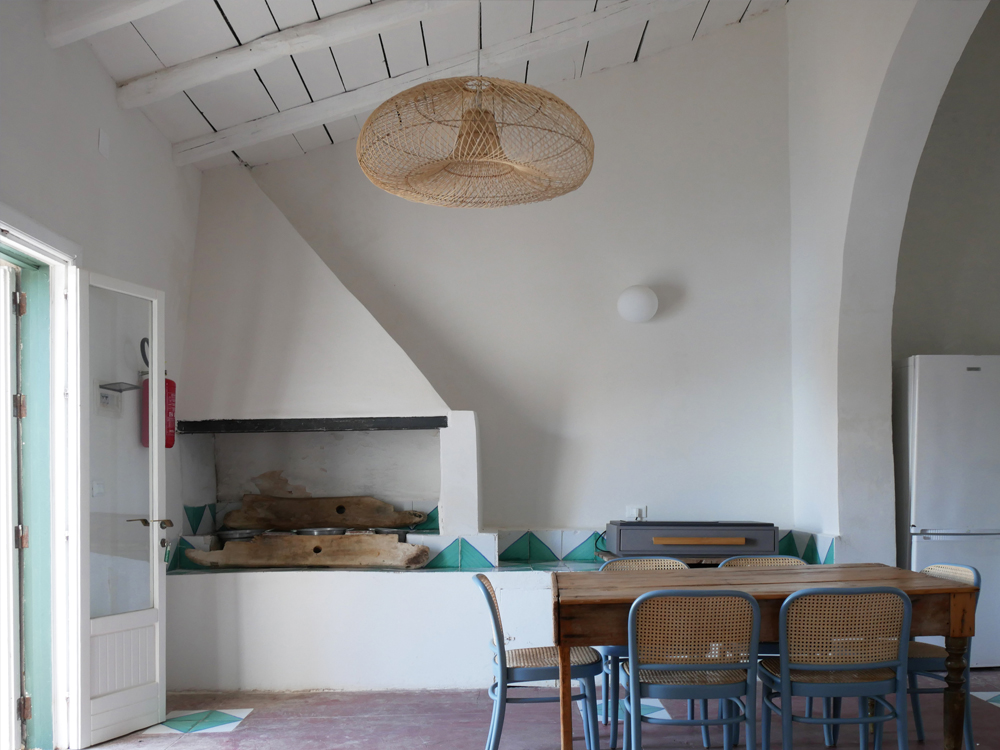

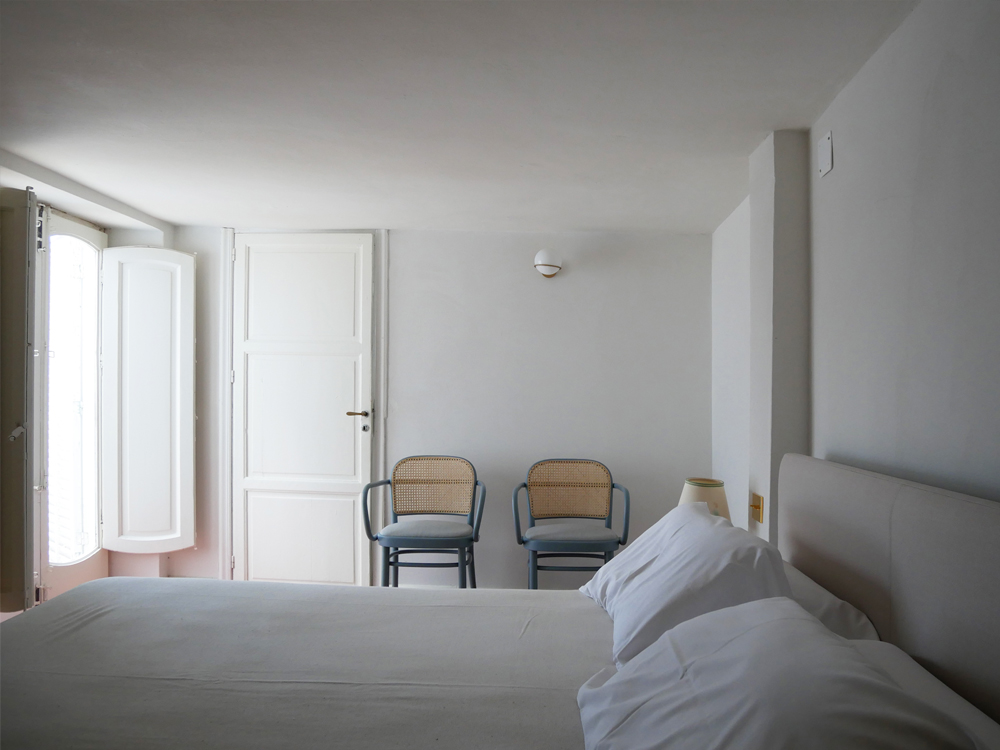


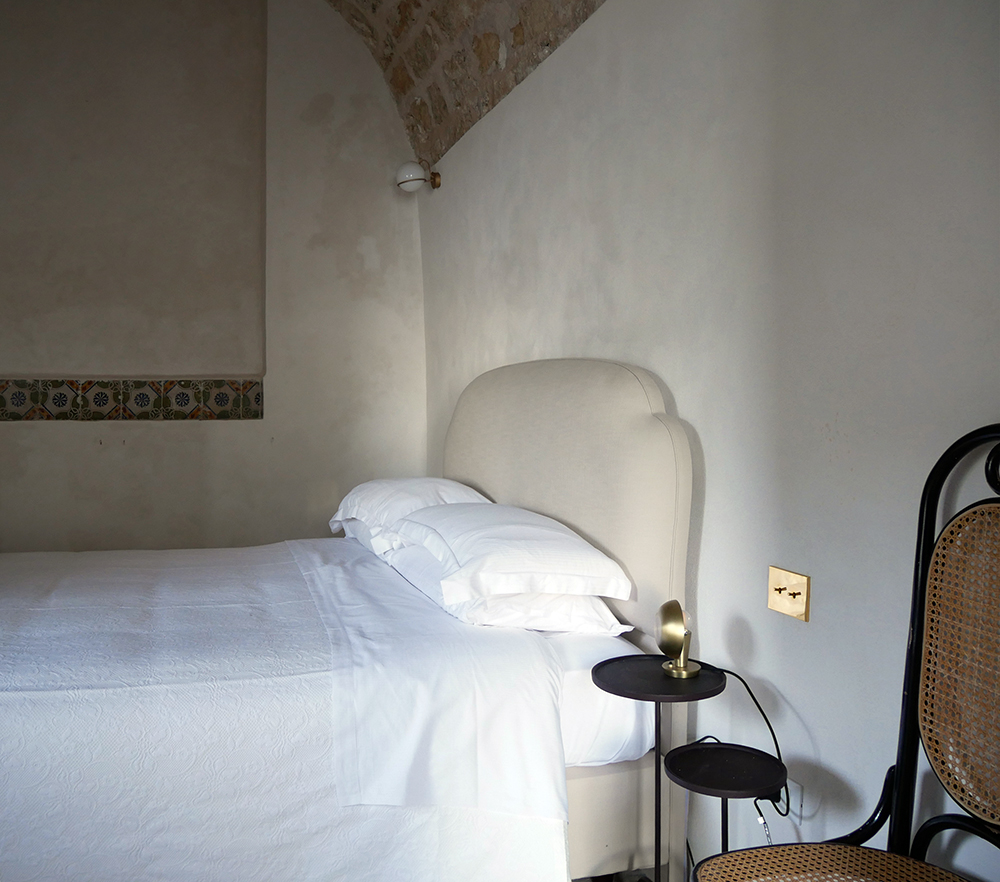

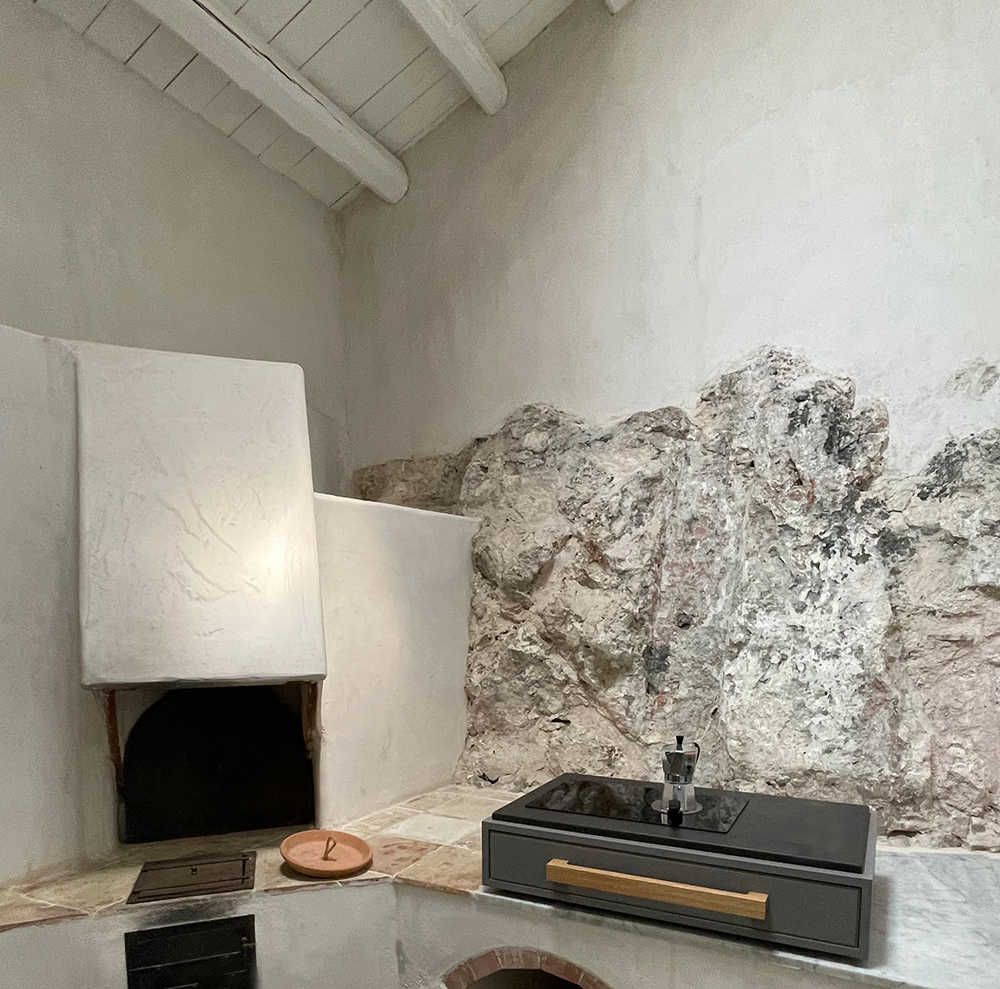
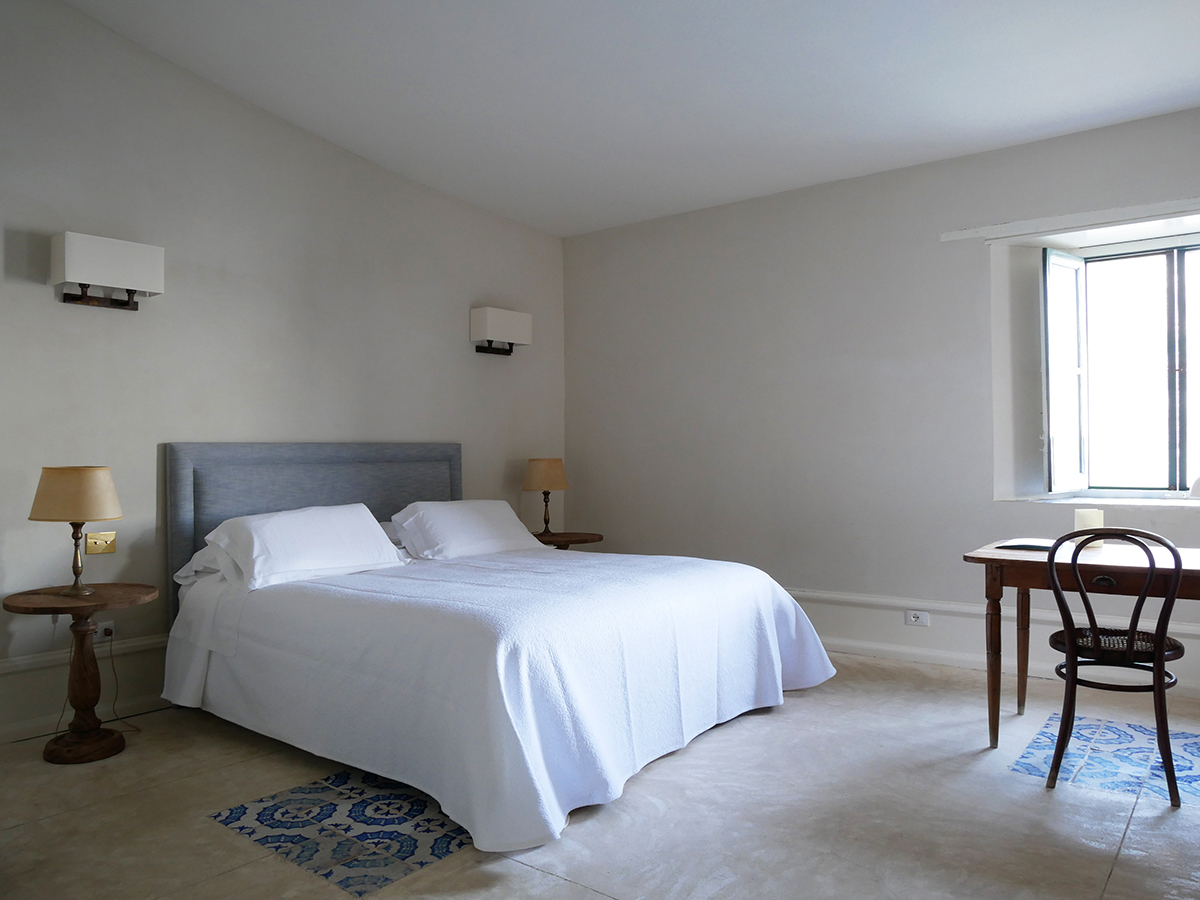

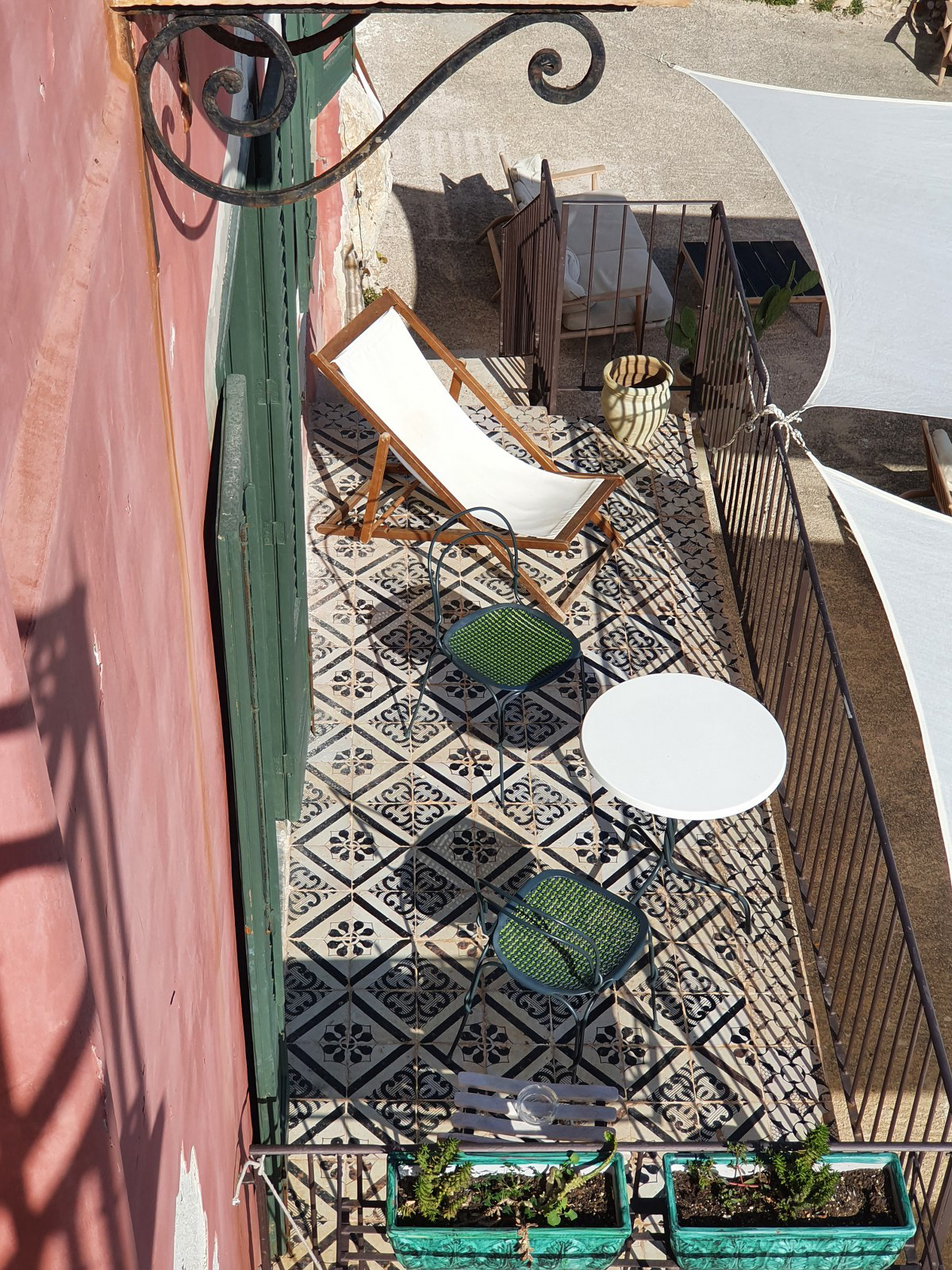
LE DIMORE MARINARE
Sono le dimore realizzate negli alloggi un tempo usati dai marinai e dal Rais.
Spesso riportano ancora la antiche finestre e i letti a castello in legno dipinto, i pavimenti in marmette e i soffitti spioventi sotto agli ampi tetti.
Anche in queste dimore lo spazio è stato rispettato, e gli openspace sono impreziositi da pareti cromatiche che amplificano le prospettive, da arredi materici e da objets trouvés.
MARITIME RESIDENCES
These rooms are located in the spaces once used as lodging for the sailors and for the Rais.
Often they still show the old windows and the painted wooden bunk beds, the original floors and the sloping ceilings under the large roofs.
Space has been respected in these residences, and the open spaces are embellished with chromatic walls that amplify the perspectives, with material furnishings and objets trouvés.
TONNARA DI SCOPELLO
INTERIOR DESIGN FOR HOSPITALITY
Intervento: restyling degli spazi interni con interventi sui colori,
gli arredi, l’illuminazione, gli accessori
DIMORE MARINARE: Caicco, Muciara, Casa del Rais, Taverna
ph. Gio Latis








